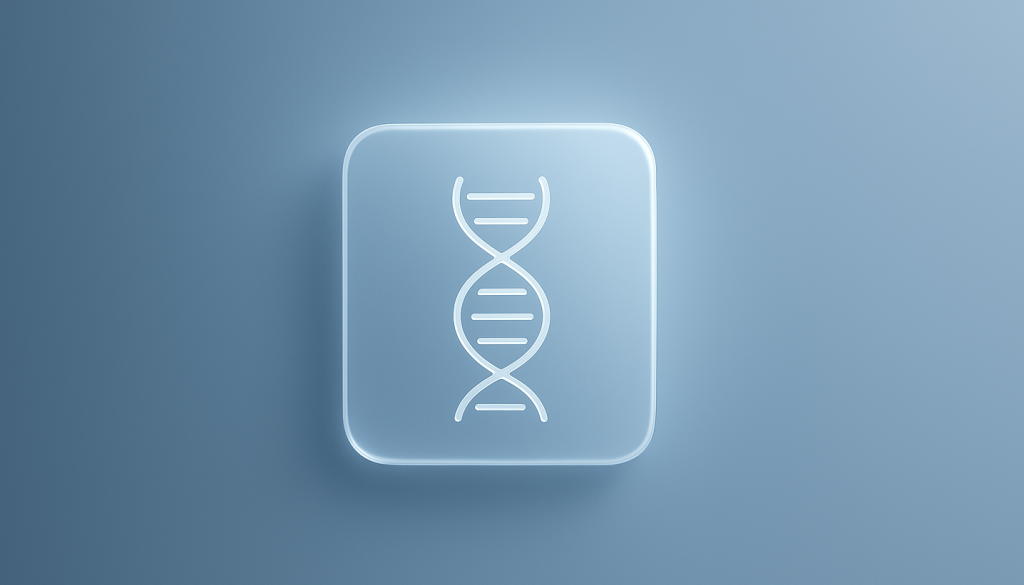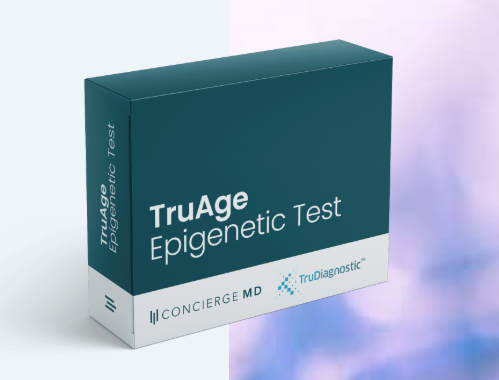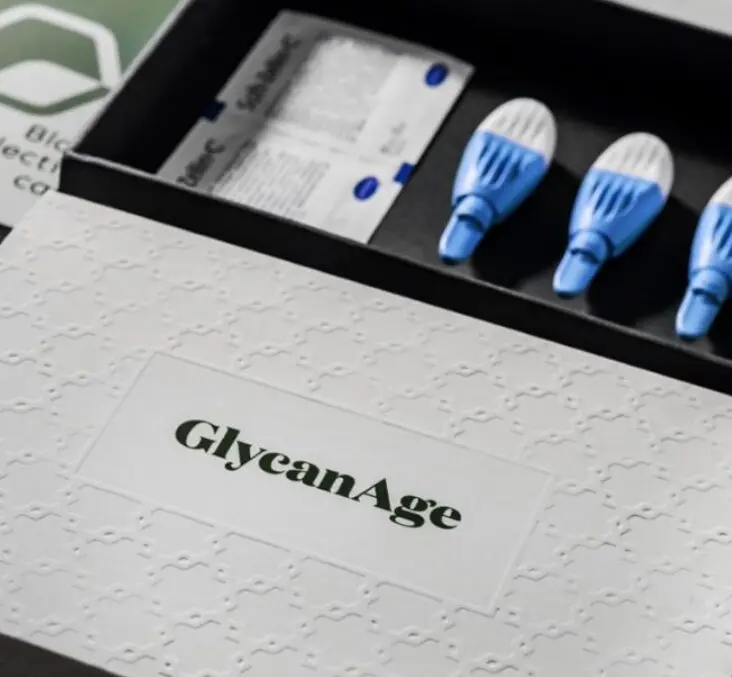The most validated biological age tests now track immune aging, DNA methylation, and pace of aging with research-grade accuracy.

Best Blood Tests For Biological Age | 2025 Guide
Biological age tests have moved far beyond “wellness gimmicks.” In 2025, the best kits use lab-grade biomarkers like DNA methylation and IgG glycans that are actively studied in aging research.
Below is a practical short list: TruAge for research strength, GlycanAge for immune aging, and The DNA Company when you want biological age plus DNA traits and coaching.
🧾 Key takeaways
- TruAge (TruDiagnostic) uses leading DNA methylation clocks like DunedinPACE and OMICmAge for a deep, research-aligned read on biological age and pace of aging.
- GlycanAge measures IgG glycans and is great for tracking immune and inflammation-driven aging over months to years.
- The DNA Company pairs a methylation-based age estimate with DNA trait reports and one-on-one coaching for people who want guidance, not just data.
- These tests are best used to track trends over time, alongside standard medical care, rather than as stand-alone verdicts on health or lifespan.
Top 3 biological age blood tests for 2025
All three kits below use lab analysis, have a clear scientific backbone, and are suitable for people serious about tracking aging biology, not just looks.
-
 Research pick
Research pickTruAge (TruDiagnostic)
Most science-heavy test • Pace of aging + organ ages -
 Immune focus
Immune focusGlycanAge
Immune & inflammation age • Lifestyle-responsive -
 Guided
GuidedThe DNA Company (DNAaging)
Biological age + DNA traits • Coaching included
How biological age blood tests actually work
Instead of guessing from photos or questionnaires, these tests read measurable signals in your blood that shift as you age and respond to lifestyle and environment.
DNA methylation clocks (TruAge & The DNA Company)
DNA inside your cells is covered with small chemical tags called methyl groups. The pattern of these tags changes with age and with stressors like smoking, pollution, and illness.
- Biological age compares your methylation pattern to reference populations.
- Pace of aging estimates how fast your body is changing right now, not just how old it looks.
- Some clocks are tested against real outcomes like disability and mortality in large cohorts.
IgG glycans (GlycanAge)
IgG antibodies carry complex sugar structures called glycans. Their pattern is tightly linked to age, chronic low-grade inflammation, and immune balance.
- GlycanAge turns this pattern into an “immune system age”.
- Studies show IgG glycans explain a large share of chronological age and track biological aging markers.
- They shift with lifestyle and metabolic interventions, which makes them practical for follow-up testing.

TruAge (TruDiagnostic)
Deep DNA methylation analysis with DunedinPACE and OMICmAge for people who want the most research-aligned test.
What TruAge measures
- DunedinPACE pace of aging, trained on 20+ years of follow-up in the Dunedin cohort.
- OMICmAge multiomic clock designed to predict mortality and major disease risk.
- SYMPHONYAge estimates for organ system ages, plus telomere estimate and lifestyle risk scores.
Why scientists care about these clocks
DunedinPACE has shown high test–retest reliability and is associated with morbidity, disability, and mortality in multiple cohorts. In the CALERIE trial, modest calorie restriction slowed the pace of aging according to this clock, which suggests it responds to real-world interventions.
OMICmAge was built to approximate proteomic and metabolomic signatures from methylation data and has outperformed older clocks at predicting death and major disease in large biobanks.

GlycanAge
Immune and inflammation-focused biological age, built on IgG glycan research in large human cohorts.
What GlycanAge measures
- Patterns of IgG glycans that shift with age and chronic low-grade inflammation.
- An immune biological age that reflects inflammation, stress, and recovery load.
Key science in plain language
A landmark study showed that a small set of IgG glycans can explain up to 58% of the variance in chronological age and that the remaining variation tracks physiological markers of biological aging. Newer work links glycan profiles to cardiometabolic risk and shows that calorie restriction and other interventions can shift the signal toward “younger” values.

The DNA Company (DNAaging)
Biological age plus DNA traits and coaching, for people who want guidance as well as a number.
What you get with DNAaging
- A methylation-based biological age score.
- DNA trait reports for detox pathways, hormones, neurotransmitters, and more.
- A coaching session to translate your profile into daily decisions.
How it compares on evidence
The underlying concept uses the same type of methylation signals as other clocks, and the broader literature shows that epigenetic age measures predict morbidity and mortality beyond chronological age. At the moment there is less public peer-reviewed validation of The DNA Company’s specific algorithm than for TruAge’s clocks or the IgG glycan work behind GlycanAge, so it is best seen as a guided, consumer-friendly package built on that broader science.
Quick comparison: which test fits your goal?
Use this as a shortcut if you already know what you want from testing.
| Feature | TruAge | GlycanAge | The DNA Company |
|---|---|---|---|
| Core biomarker | DNA methylation (multi-clock panel) | IgG N-glycans | DNA methylation + DNA traits |
| Main output | Biological age, pace of aging, organ ages | Immune biological age | Biological age + personalized plan |
| Best for | Science-first users & retesting | Inflammation, stress & recovery tracking | Guidance and habit change |
| Evidence depth | Very strong for underlying clocks | Strong in immune aging field | Leans on broader methylation literature |
🎁 Verified biological age test discount codes (2025)
These codes were checked for 2025. Confirm that the discount is applied at checkout before completing payment.
Apply at checkout to save on TruAge biological age kits.
Order TruAgeApply at checkout for eligible DNAaging packages.
Order DNA Company testCodes are generally single-use and may not stack with other promotions. Availability, pricing and shipping are controlled by each brand and may vary by region.
How to use biological age results in real life
The point is not to obsess over a single number. The value comes from using these results as feedback for better decisions over time.
- Start with a baseline. Take one test now to understand where you are, not to judge yourself.
- Focus on controllables. Review sleep, movement, nutrition, stress, and medical screening with a qualified professional.
- Give changes time to work. Most people retest after 6–18 months, not every few weeks.
- Stick to one lab. Use the same company so your before-and-after results are comparable.
- Integrate with standard care. Discuss big gaps or surprising results with your doctor, especially if you already have chronic conditions.
FAQ: biological age testing
Are these tests medical devices?
No. They are advanced wellness and research tools that can complement standard medical care, but they do not diagnose disease or replace routine screening.
Which biological age test is most strongly validated?
For outcome-level data, the clocks behind TruAge, especially DunedinPACE, have some of the strongest peer-reviewed evidence linking them to morbidity and mortality in large cohorts.
Can lifestyle changes really move biological age?
Trials such as CALERIE suggest that caloric restriction can modestly slow the methylation-based pace of aging, and other studies show shifts in IgG glycans with metabolic and lifestyle interventions. Effects are real but usually modest, and results vary by person.
How often does it make sense to retest?
For most people, retesting every 6–18 months balances signal and noise. More frequent testing is usually not necessary unless you are in a structured research setting.
Can a single bad result predict my future health?
No. Biological age metrics work best as risk indicators and trend tools combined with your clinical history, not as stand-alone predictions of individual outcomes.
Sources & further reading
Selected high-authority references on DNA methylation clocks, pace of aging, and IgG glycans as biomarkers of aging.
-
Belsky DW et al. “DunedinPACE, a DNA methylation biomarker of the pace of aging.” eLife. 2022.
https://elifesciences.org/articles/73420 -
Waziry R et al. “Effect of long-term caloric restriction on DNA methylation measures of biological aging in healthy adults from the CALERIE trial.” Nature Aging. 2023.
https://www.nature.com/articles/s43587-022-00357-y -
Krištić J et al. “Glycans are a novel biomarker of chronological and biological ages.” J Gerontol A Biol Sci Med Sci. 2014.
https://pubmed.ncbi.nlm.nih.gov/24325898/ -
Tay JH et al. “Biological age measured by DNA methylation clocks and health: a systematic review and meta-analysis.” The Lancet Healthy Longevity. 2025.
https://pubmed.ncbi.nlm.nih.gov/41207303/
Created by SimplyAntiAging.com’s Editorial Research Team
Reviewed and updated for accuracy in November 2025.


